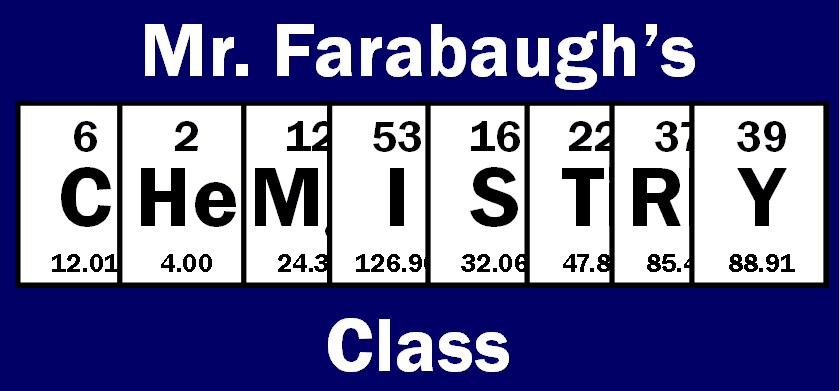On Monday we explored the topic of Atomic History, as I made "virtual" interviews with Democritus, Antoine Lavoisier, John Dalton, J.J. Thomson, and Ernest Rutherford. You should be familiar with these five people and how their work influenced our understanding of the atom. You should also be familiar with terms like atomos, law of conservation of mass, cathode ray tube, plum pudding model, alpha particles, and the gold foil experiment (alpha scattering experiment) which led Rutherford to the idea of a nuclear model for the atom.
On Tuesday we explored the properties of protons, electrons, and neutrons. The atomic number is the number of protons, which is unique for each element on the periodic table. The mass number is equal to the sum of the protons and neutrons. A pair of isotopes are defined as two atoms that have the same number of protons but different numbers of neutrons. An ion is an atom that has either lost electrons (to form a positive ion) or has gained electrons (to form a negative ion).
Today we explored the idea of a weighted average. In our "Isotopes of Beanium" activity, we saw that when the relative abundance of two isotopes is NOT 50%-50%, you need to calculate the average using decimals, like this calculation, for example with chlorine:
(35) x (0.75) + (37) x (0.25) = 35.5
Tomorrow we will explore radioactivity and half-life. There will be a practice test review tomorrow and a Unit 3 Test planned for Friday. Keep studying!!
Wednesday, February 16, 2011
Wednesday, February 9, 2011
Tuesday, February 1, 2011
AP Chemistry - Chapter 11 problems
These are the textbook problems that I recommend for you to do:
3, 9, 11, 13, 15, 19, 21, 23, 25, 27(a,b), 31, 33, 35, 39, 43, 45, 61, 63, 75
Subscribe to:
Posts (Atom)
